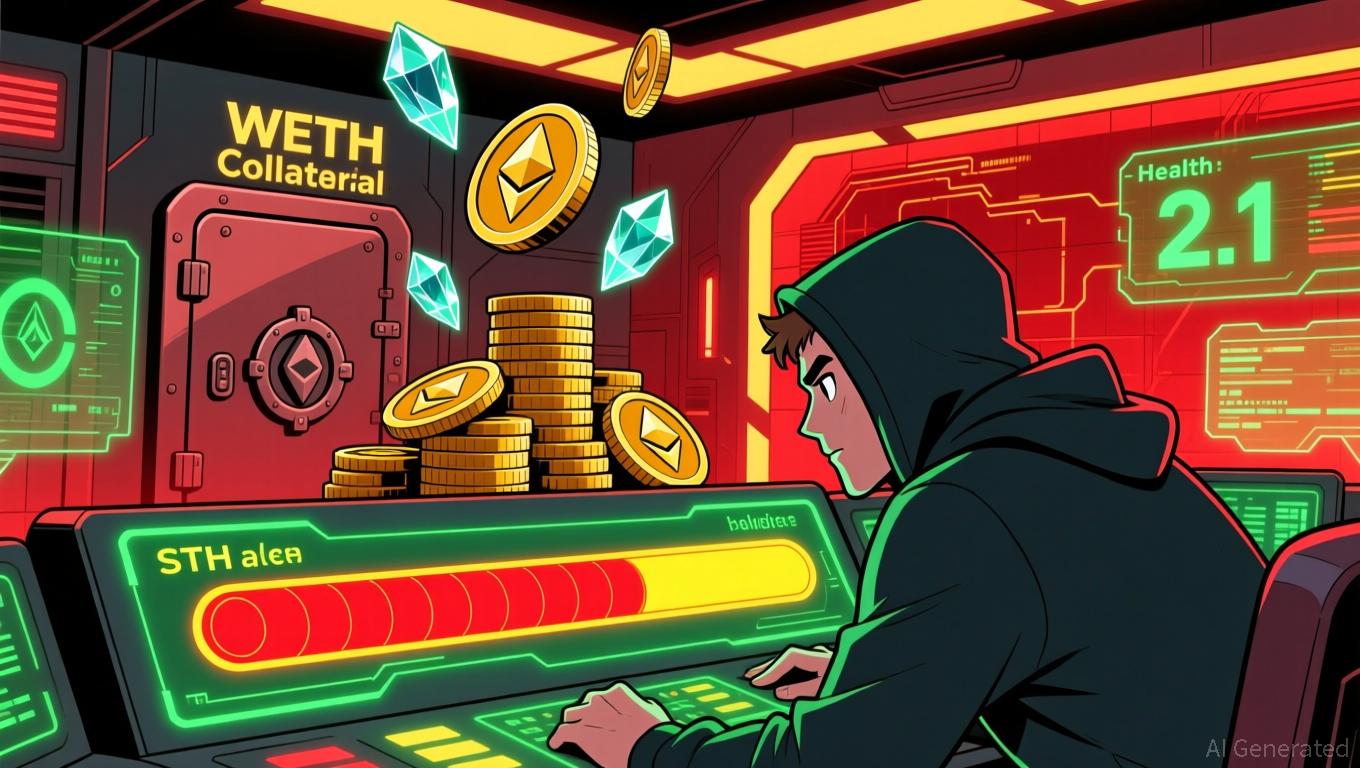Ethereum News Update: Major Ethereum Holders Invest $1.37B During Market Dip, Indicating Potential Rise to $10K
- Ethereum whales spent $1.37B buying 394,682 ETH during November 2025's 12% price drop, signaling strong bullish conviction. - Aave whale leveraged $270M loans to acquire 257,543 ETH ($896M), using a high-leverage borrowing-swapping cycle to expand holdings. - Institutional buyers like Bitmine Immersion added $139.6M ETH, joining coordinated accumulation as exchange reserves hit 2016 lows. - Market fundamentals show negative MVRV readings and $3,400 ETH stabilization, with analysts projecting $4,800–$10,0
The largest Ethereum holders have begun a significant accumulation phase, acquiring more than $1.37 billion worth of
This Aave whale implemented a high-leverage strategy involving repeated cycles of borrowing, swapping, and redepositing.

Other significant investors also joined the buying spree. Bitmine Immersion Technologies, the largest corporate holder of Ethereum, increased its holdings by 40,719 ETH ($139.6 million), continuing its aggressive dip-buying approach after making $250 million and $113 million purchases in October, according to
Market indicators support this growing bullish trend.
The surge in leveraged whale activity comes as the market anticipates Ethereum’s Fusaka upgrade in December, which is expected to improve scalability and lower transaction fees. The combination of growing institutional interest and enhanced network infrastructure has attracted renewed attention from major investors, despite the ongoing risks of liquidation, as
Disclaimer: The content of this article solely reflects the author's opinion and does not represent the platform in any capacity. This article is not intended to serve as a reference for making investment decisions.
You may also like
Ethereum Updates: BitMine Capitalizes on Market Slump to Acquire 2.9% of Ethereum Tokens
- Bitcoin fell below $103,000 on Nov 12 amid $120M+ leveraged liquidations on Binance, exposing crypto market fragility. - BitMine Technologies capitalized on the dip, acquiring 2.9% of Ethereum's supply ($828M) to boost treasury holdings. - $341.85M in total crypto liquidations highlighted overextended positions, with Ethereum short sellers losing $76M. - Aggressive bearish bets like James Wynn's $275K 40x short face liquidation risks if Bitcoin recovers above $6,856. - Analysts warn weak ETF inflows and

Prediction Markets Move Into the Mainstream with Polymarket’s Return to the U.S.
- Polymarket relaunches U.S. beta after CFTC fine, now compliant via $112M QCX acquisition. - Partnerships with Yahoo/Google boost legitimacy as trading volume hits $3.01B, targeting sports betting. - Faces competition from Kalshi and ProphetX, which seeks CFTC license for nationwide expansion. - Industry grapples with fraud risks amid scandals, prompting calls for clearer regulatory boundaries. - Traditional firms like eToro and CME explore prediction markets, signaling mainstream adoption.

Bitcoin Updates: Crypto Fear Index at 15—Is This Surrender or a Chance to Invest?
- Crypto Fear & Greed Index hit 15, a seven-month low, signaling extreme investor pessimism amid macroeconomic and regulatory pressures. - Historical data suggests such fear phases often precede market recoveries, with Bitcoin near 2022 rebound levels and Ethereum whale buying surging. - Bitcoin ETFs saw $523M inflows as institutional demand returns, contrasting Ethereum's outflows and Brazil/Japan's new regulatory crackdowns. - Analysts urge long-term investors to view the dip as an opportunity, while sho

Bitcoin Updates: Japan Strives to Foster Crypto Advancements While Ensuring Investor Protection Amid DATs Decline
- Japan Exchange Group (JPX) plans stricter rules for digital-asset treasury (DAT) firms amid volatile stock collapses, including enhanced audits and backdoor listing restrictions. - Metaplanet and Convano, major DATs holding thousands of BTC, have lost over 60% of their value, reflecting global market instability linked to crypto-heavy strategies. - Regulators warn DATs pose risks to retail investors due to reliance on volatile assets, while Japan balances innovation incentives with governance safeguards
